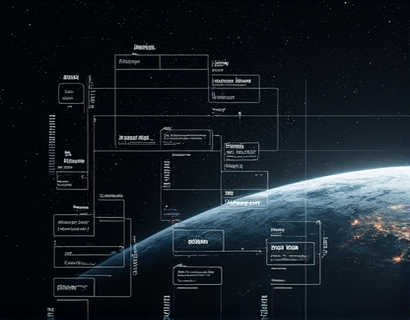Maximizing Leadership Efficiency: A Comprehensive Dashboard for Streamlined Team Management and Enhanced Productivity
In today's fast-paced business environment, effective leadership is crucial for driving success and maintaining a competitive edge. For business leaders and organizational managers, managing large and diverse teams can be a daunting task. The complexity of overseeing multiple departments, ensuring seamless communication, and making informed decisions can often lead to inefficiencies and bottlenecks. To address these challenges, a comprehensive dashboard designed specifically for leadership has emerged as a game-changer. This advanced tool is expertly crafted to streamline the management of large, diverse teams, enhancing communication and decision-making, and ultimately driving productivity and efficiency across various industries.
The need for such a dashboard is rooted in the evolving nature of work and the increasing complexity of organizational structures. Traditional management tools often fall short in providing the necessary insights and functionalities required to manage modern teams effectively. A comprehensive dashboard offers a centralized platform that integrates various aspects of team management, from project tracking and performance analytics to communication and resource allocation. By consolidating these functions into a single, user-friendly interface, leaders can oversee their teams more efficiently and make data-driven decisions with greater ease.
Key Features of a Comprehensive Leadership Dashboard
A well-designed leadership dashboard encompasses a range of features that cater to the diverse needs of business leaders. These features are meticulously engineered to simplify operations, enhance communication, and empower strategic decision-making.
1. Real-Time Analytics and Reporting: One of the most critical features of a comprehensive dashboard is its ability to provide real-time analytics and reporting. This capability allows leaders to monitor team performance, project progress, and key metrics at a glance. Customizable dashboards can be tailored to display the most relevant data, ensuring that leaders have the insights they need to make informed decisions quickly.
2. Collaboration Tools: Effective communication is the backbone of any successful team. A comprehensive dashboard includes robust collaboration tools that facilitate seamless communication among team members. Features such as integrated chat, file sharing, and task assignment ensure that everyone is on the same page, reducing misunderstandings and increasing productivity.
3. Resource Management: Managing resources efficiently is essential for optimizing team performance. The dashboard provides tools for tracking and allocating resources, including personnel, budget, and equipment. This ensures that resources are used effectively and that bottlenecks are identified and addressed promptly.
4. Performance Tracking and Development: Monitoring individual and team performance is crucial for continuous improvement. The dashboard offers detailed performance tracking features, allowing leaders to set goals, track progress, and provide constructive feedback. This not only helps in identifying areas for improvement but also in recognizing and rewarding achievements.
5. Project Management Integration: Project management is a core aspect of team leadership. A comprehensive dashboard integrates with popular project management tools, providing a unified view of ongoing projects, timelines, and milestones. This integration streamlines workflows and ensures that all team members have access to the latest project information.
Benefits of Implementing a Comprehensive Dashboard
The implementation of a comprehensive dashboard brings numerous benefits to organizations, making it an indispensable tool for modern leadership.
Firstly, enhanced productivity is a direct result of streamlined operations and improved communication. With all necessary tools and information at their fingertips, team members can focus on their core tasks without interruptions or delays. This leads to faster completion of tasks and higher overall productivity.
Secondly, improved decision-making is another significant advantage. Real-time data and comprehensive analytics enable leaders to make informed decisions quickly, reducing the risk of errors and missed opportunities. This agility is particularly valuable in dynamic industries where rapid responses can mean the difference between success and failure.
Additionally, a comprehensive dashboard fosters better team alignment. By providing a clear overview of goals, roles, and responsibilities, team members are better aligned with the organization's objectives. This alignment ensures that everyone is working towards the same goals, reducing redundancies and increasing efficiency.
Furthermore, the dashboard promotes transparency and accountability. With clear visibility into individual and team performance, leaders can hold team members accountable for their tasks and outcomes. This transparency builds trust and encourages a culture of responsibility and continuous improvement.
Industry-Specific Applications
The versatility of a comprehensive dashboard makes it applicable across various industries, each with its unique challenges and requirements.
In the technology sector, where projects are often complex and fast-paced, the dashboard's real-time analytics and project management integration are invaluable. Leaders can monitor development progress, resource allocation, and team performance in real-time, ensuring that projects stay on track and meet deadlines.
In the healthcare industry, the dashboard's resource management and collaboration tools are crucial. Healthcare teams often work under high pressure and need to coordinate seamlessly. The dashboard facilitates efficient resource allocation and ensures that critical information is accessible to all team members, enhancing patient care and operational efficiency.
For manufacturing and logistics, the dashboard's resource management and real-time tracking features are essential. Leaders can monitor production lines, inventory levels, and delivery schedules, optimizing operations and reducing downtime. This level of visibility and control is vital for maintaining high standards of quality and service.
In the non-profit and educational sectors, the dashboard's reporting and performance tracking features help organizations measure impact and achieve their mission-driven goals. Leaders can track funding, volunteer engagement, and program outcomes, ensuring that resources are used effectively and that the organization's objectives are met.
Implementing a Comprehensive Dashboard
Implementing a comprehensive dashboard requires a strategic approach to ensure maximum benefits. Here are some key steps to consider:
First, define clear objectives. Identify the specific challenges you aim to address and the goals you want to achieve with the dashboard. This clarity will guide the selection and customization of the dashboard features.
Next, choose the right technology. Select a dashboard platform that aligns with your organizational needs and integrates seamlessly with existing systems. Consider factors such as scalability, user-friendliness, and customer support.
Then, train your team. Provide comprehensive training to ensure that all users are comfortable with the new tool. This includes hands-on sessions, documentation, and ongoing support to address any questions or issues.
Finally, monitor and adjust. After implementation, continuously monitor the dashboard's impact on team performance and organizational efficiency. Gather feedback from users and make adjustments as needed to optimize the tool's effectiveness.
Conclusion
A comprehensive dashboard is a powerful solution for modern leaders looking to maximize efficiency and productivity. By streamlining operations, enhancing communication, and empowering strategic decision-making, this tool transforms the way teams are managed across diverse industries. As businesses continue to evolve, the ability to adapt and leverage advanced technologies will be key to sustained success. Embracing a comprehensive dashboard is a strategic move that can significantly enhance leadership effectiveness and drive organizational excellence.










































